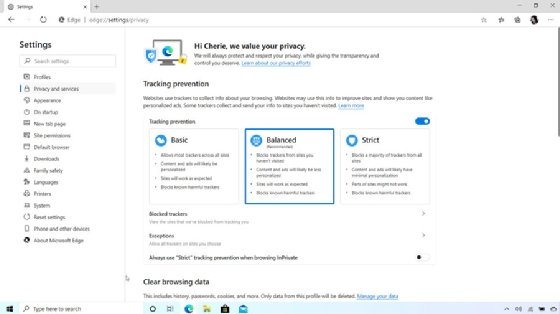
CenturionStudio.it - Fotolia
Microsoft to drop Edge Legacy from upcoming Windows update
Microsoft is doing some spring cleaning with its Edge browser. The April Windows update will uninstall Edge Legacy and replace it with the new, Chromium-based Edge.
Microsoft will soon drop the Edge Legacy browser from Windows and replace it with a version based on the open source Chromium software developed by Google.
An April 13 Windows security update will uninstall the old browser, based on Microsoft's EdgeHTML code, and replace it with the new Edge, Microsoft said.
The change will preserve some settings. For example, Microsoft will swap Edge Legacy pinned to a taskbar with the new browser. Also, favorites and passwords set in Edge Legacy will carry over to the new Edge.
For Windows computers that already have the latest Edge version, the update will remove only the older browser.
Microsoft said organizations using Edge Legacy in kiosk mode will have to install the new Edge and set up its kiosk mode before applying the April security update. Kiosk mode allows places like public libraries and hotels to set up limited-use computers for the public.
Microsoft launched the new Edge in January 2020 and has been pushing companies using Internet Explorer 11 and Edge Legacy to switch. On March 9, it will release the last security update for the old Edge. Microsoft has already stopped supporting the Teams web app in IE 11 and plans to add the other Microsoft 365 apps in August.
While the change may be disruptive for organizations using Edge Legacy, it will help Microsoft focus on improvements, said Holger Mueller, an analyst at Constellation Research. "In the long run, the freed-up resources from not having to support two browsers should deliver browser innovation from Microsoft."
The new Edge has gained users, but it is far from a dominant player in the browser market. According to StatCounter, Edge has a 3.23% share, while IE and Edge Legacy are at .81% and .32%, respectively. The leading browsers are Chrome at 63.63% and Safari at 19.37%.

Microsoft launches Autofill
In other news, Microsoft recently introduced a consumer-focused password autofill feature intended to sync passwords across Windows, macOS, Android and iOS devices. Autofill works on iOS and Android phones through the Microsoft Authenticator app. On PCs and Macs, the feature works with only the Microsoft Edge and Google Chrome browsers. Passwords saved in Edge will automatically sync to Authenticator, while Chrome needs an extension to use the feature.
The feature helps consumers maintain multiple passwords rather than use the same one at various sites. When an individual enters a password at a site or in an app, Authenticator will ask if the user wants to save it to a Microsoft account. If the password is saved, the autofill option will be presented on the user's next visit.
A new import feature lets Authenticator carry over saved passwords from Chrome and other password managers.
Microsoft said it plans to bring other autofill information, like payment information and addresses, into the app soon.
Mike Gleason is a reporter covering end-user computing topics such as desktop management. He previously covered communities in the MetroWest region of Massachusetts for the Milford Daily News, Walpole Times, Sharon Advocate and Medfield Press. He has also worked for newspapers in central Massachusetts and southwestern Vermont and served as a local editor for Patch. He can be found on Twitter at @MGleason_TT.








